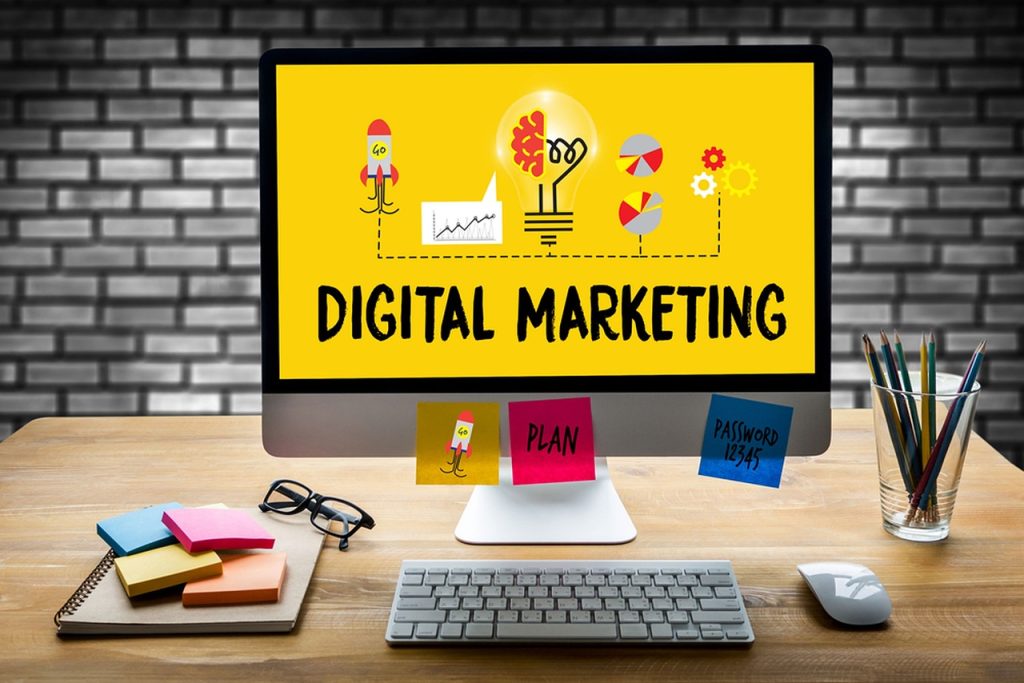Looking to gain a competitive edge in today’s crowded digital landscape? Crafting a robust SME digital marketing plan is the key to driving growth, boosting visibility, and converting prospects into loyal customers. In this guide, we’ll uncover eight foundational strategies—ranging from SEO best practices to result-driven social media tactics—that will help your small or medium-sized enterprise stand out online.
1. Define Clear Objectives and Key Performance Indicators (KPIs)
Every journey starts with a clear destination. For SMEs, identifying specific digital marketing goals is crucial—whether it’s increasing website traffic, boosting conversion rates, generating leads, or building brand awareness. Once you know your objectives, you can link them to relevant KPIs that help measure progress.
Start with SMART Goals
- Specific: Avoid vague targets like “Increase website visitors.” Instead, aim to “Increase website visitors by 30% in the next 3 months.”
- Measurable: Your KPIs might include web traffic volume, lead conversions, or email open rates.
- Achievable: Ensure your targets align with your resources and capabilities.
- Relevant: Focus on goals tied to your business model. If you run a local boutique, emphasize driving foot traffic and online store visits.
- Time-Bound: Commit to deadlines such as “By December 2025” or “In Q1 of 2025.”
Essential KPIs for SMEs
- Website Traffic: Monitor visits, unique visitors, and sessions.
- Conversion Rate: Track how many visitors become leads or paying customers.
- Customer Acquisition Cost (CAC): Determine the total expense of acquiring one new customer.
- Return on Ad Spend (ROAS): Gauge the performance of your paid advertising.
- Email Open and Click-Through Rates: Assess email campaign effectiveness.
Pro Tip: Use Google Analytics 4 (GA4) for real-time data on traffic sources, user demographics, and on-page behavior. GA4’s enhanced reporting is ideal for SMEs seeking detailed insights into the customer journey.
2. Know Your Target Audience Inside Out
Understanding your ideal customers is the backbone of any digital marketing plan. By identifying their demographics, behaviors, pain points, and online habits, you can craft messages that resonate—and that means better engagement, trust, and sales.
Create Detailed Buyer Personas
A buyer persona is a semi-fictional representation of your target market. Include:
- Demographics: Age, gender, location, job title, income.
- Psychographics: Interests, hobbies, goals, frustrations.
- Online Behavior: Preferred social media platforms, reading preferences, and typical browsing times.
- Pain Points: Core challenges or problems that your product or service can solve.
For example:
- Persona Name: “Rita the Restaurant Owner”
- Demographics: 45-year-old female who manages a family-owned restaurant in the city.
- Frustrations: Attracting consistent footfall on weekdays.
- Goals: Improve online visibility to bring in local customers.
Research Tools
- Surveys & Questionnaires: Gather feedback from current customers.
- Social Media Insights: Use platform analytics to understand audience demographics.
- Website Analytics: Pinpoint high-traffic pages, bounce rates, and user flows.
Pro Tip: Update your personas regularly. Consumer preferences evolve, and so should your marketing approach.
3. Develop a Solid Branding & Unique Value Proposition (UVP)
Branding isn’t just about a pretty logo or catchy tagline—it’s how people perceive your business. Your Unique Value Proposition (UVP) explains why customers should choose you over competitors.
Key Branding Elements for SMEs
- Logo & Color Palette: Select a design that reflects your brand’s personality.
- Consistent Messaging: Maintain the same tone, language, and style across your website, social media, and email newsletters.
- Brand Voice: Decide if you’re playful, professional, or somewhere in between, and keep it consistent.
Craft Your UVP
Your UVP should be a concise statement highlighting:
- Who You Serve (e.g., local restaurateurs, busy professionals, eCommerce startups)
- What You Offer (product or service)
- Why You’re Unique (cost-effective, high-quality, specialized expertise)
For example:
“We help small restaurants thrive with data-driven local SEO campaigns at an affordable price—freeing you to focus on serving great food.”
4. Content Marketing & SEO: The Dynamic Duo
For SMEs, Content Marketing is a powerful way to build trust, show expertise, and turn leads into loyal customers. Couple this with Search Engine Optimization (SEO) to ensure you’re visible on search engine results pages (SERPs).
Content Marketing Essentials
- Blog Posts: Offer how-to guides, industry news, and opinion pieces.
- Videos: Post product demos, testimonials, or behind-the-scenes features.
- Infographics: Visual representations that simplify complex information.
- Podcasts: Appeal to audiences who prefer audio content.
SEO Best Practices
- Keyword Research: Use Google Keyword Planner or SEMrush to discover popular, relevant keywords. Long-tail keywords (e.g., “affordable organic skincare routine”) can zero in on specific audiences.
- On-Page Optimization: Place your target keywords in page titles, meta descriptions, headers, and throughout your content—but avoid spammy keyword stuffing.
- Technical SEO: Optimize site speed and mobile responsiveness and ensure SSL security (HTTPS).
- Link Building: Acquire backlinks from relevant, reputable sites to enhance domain authority.
Filweb Asia’s SEO Services
If you’re seeking professional assistance to bolster your website’s rankings, consider Filweb Asia’s SEO Services. Our dedicated team employs advanced tactics, from thorough keyword research and on-page optimization to premium link-building strategies, ensuring your brand gets the visibility it deserves.
5. Engage Your Audience with Social Media Marketing
Social media platforms allow SMEs to interact one-on-one with potential customers. Identify where your audience spends their time, then tailor your content to that platform’s strengths.
Platform Breakdown
- Facebook: Wide user base, excellent for community building and targeted ads.
- Instagram: Great for visually rich niches like food, fashion, and travel.
- LinkedIn: Ideal for B2B marketing, professional networking, and lead generation.
- Twitter/X: Good for real-time updates, news, and quick customer support.
- TikTok: Perfect for creative short videos reaching younger demographics.
Strategies to Maximize Social Reach
- Consistent Posting Schedule: Use automation tools like Buffer or Hootsuite to plan posts.
- Engaging Content: Mix promotional posts with user-generated content, tips, polls, and Q&A sessions.
- Hashtag Research: Use trending and niche-relevant hashtags for higher discoverability.
- Social Listening: Monitor mentions of your brand, competitors, and industry keywords to stay in the loop.
Pro Tip: Short-form videos remain highly effective. Platforms like Instagram Reels and TikTok continue to grow, offering creative ways to engage audiences.
6. Harness the Power of Email Marketing & Automation
Email marketing is consistently one of the most cost-effective digital channels. A 2023 Litmus report shows that email marketing generates an average return of $36 for every $1 spent.
Building an Email List
- Lead Magnets: Entice potential subscribers with free eBooks, checklists, or discount codes.
- Pop-Up Forms: Implement them strategically—exit-intent pop-ups can capture a visitor’s attention just as they’re about to leave.
- Social Media Promotions: Encourage your social media followers to subscribe for exclusive deals.
Segmentation & Automation
- Segmentation: Group subscribers based on behaviors (past purchases, page visits), demographics, or interests to deliver highly personalized content.
- Drip Campaigns: Send automated emails at set intervals to nurture new subscribers or guide them through your sales funnel.
- Behavioral Triggers: Automate reminders for cart abandonments, product recommendations, or event follow-ups.
Tool Tip: Platforms like Mailchimp, ActiveCampaign, or HubSpot offer robust automation features and in-depth analytics.
7. Invest in Paid Advertising (PPC, Social Ads, Display Ads)
Organic efforts are essential for long-term success, but paid advertising delivers immediate visibility. Pay-Per-Click (PPC) ads on Google or social media allow you to target specific demographics and keywords.
Choosing the Right Paid Channels
- Google Ads: Capture high-intent users searching for your products or services.
- Facebook & Instagram Ads: Target audiences by age, location, interests, or online behavior.
- LinkedIn Ads: Excellent for B2B lead generation and professional outreach.
- Display Ads: Appear on relevant websites, and help in retargeting those who’ve previously visited your site.
Tips for Effective PPC
- Keyword Matching: Decide between broad, phrase, or exact match to manage audience reach.
- Compelling Ad Copy: Highlight unique benefits and include strong calls-to-action.
- Landing Page Relevance: Direct ad traffic to optimized pages that match user intent.
- Budget & Bidding: Start modestly, monitor performance closely, and adjust bids to favor high-converting keywords.
Pro Tip: Track your Return on Ad Spend (ROAS). Shift resources from underperforming campaigns to those delivering better results.
8. Analyze, Optimize, and Refine Continuously
A digital marketing plan isn’t a one-and-done effort—it’s ongoing. Regular analysis will show you what’s working, what needs tweaking, and where you can innovate.
Key Performance Analysis
- Website Traffic Trends: Compare organic vs. paid sources.
- Social Engagement: Which posts spark the most interaction?
- Email Performance: Which subject lines get the highest open rates?
- Conversion Path Analysis: Which channels drive quality leads and actual sales?
Testing & Iteration
- A/B Testing: Experiment with different versions of ads, landing pages, or email headlines. Change only one variable at a time to pinpoint what works best.
- Heatmaps & User Recordings: Tools like Hotjar or Crazy Egg offer insights into how users interact with specific web pages.
- Feedback Loops: Encourage customer reviews, surveys, and social media polls to gather real-world input.
Pro Tip: Schedule regular reviews—monthly or quarterly—to assess performance metrics, strategize new campaigns, and set fresh milestones.
Bonus: Create a Strategic Content Calendar
A content calendar ensures consistency and helps you maintain a cohesive brand voice across all platforms. Here’s a simple layout:
Weekly Schedule Example
| Day | Activity | Platform/Medium |
|---|---|---|
| Monday | Blog Post on industry trends | Company Blog, LinkedIn |
| Tuesday | Short product demo or tip video | Instagram, TikTok |
| Wednesday | Email Newsletter with curated insights | Email List |
| Thursday | Poll or interactive Q&A | Facebook, Twitter/X |
| Friday | Behind-the-Scenes or “Team Feature” | Instagram Stories, LinkedIn |
| Weekend | User-generated content or testimonials | Facebook, Instagram |
Platform Suggestions
- YouTube: For in-depth product demos and behind-the-scenes features.
- LinkedIn: Ideal for professional thought leadership and networking.
- TikTok & Reels: Quick, engaging content that feels authentic and light-hearted.
To explore more about boosting your online presence with well-planned social media posts, check out our article on Social Media Mastery for Entrepreneurs (placeholder link).
Evergreen Value & Trends
- Mobile Optimization: Over 55% of global web traffic was mobile as of 2024. Ensure your site is mobile-responsive.
- Voice Search Optimization: With voice assistant usage rising, incorporate conversational keywords (e.g., “best pizza near me”).
- AI Solutions: Chatbots and AI-driven recommendation engines enhance user experience.
- Video Content: Continues to dominate consumer engagement—add captions for better accessibility.
By focusing on these evergreen strategies and staying attuned to emerging trends, your SME’s digital marketing plan will remain effective and relevant.
Time to Elevate Your Digital Marketing Strategy
You now have eight core elements to craft a successful digital marketing plan—plus a bonus content calendar tip. From setting SMART goals to leveraging advanced SEO with Filweb Asia’s SEO Services, each element forms part of a comprehensive approach to online growth.
Take the Next Step
- Revisit Your Goals and KPIs: Align them with your current business landscape.
- Conduct a Website Audit: Identify gaps in SEO, user experience, and content.
- Implement and Iterate: Monitor performance metrics to fine-tune strategies.
Ready to supercharge your online presence?
Contact Filweb Asia today to discover how our SEO solutions can transform your website’s visibility, drive quality leads, and propel your SME to new heights.









